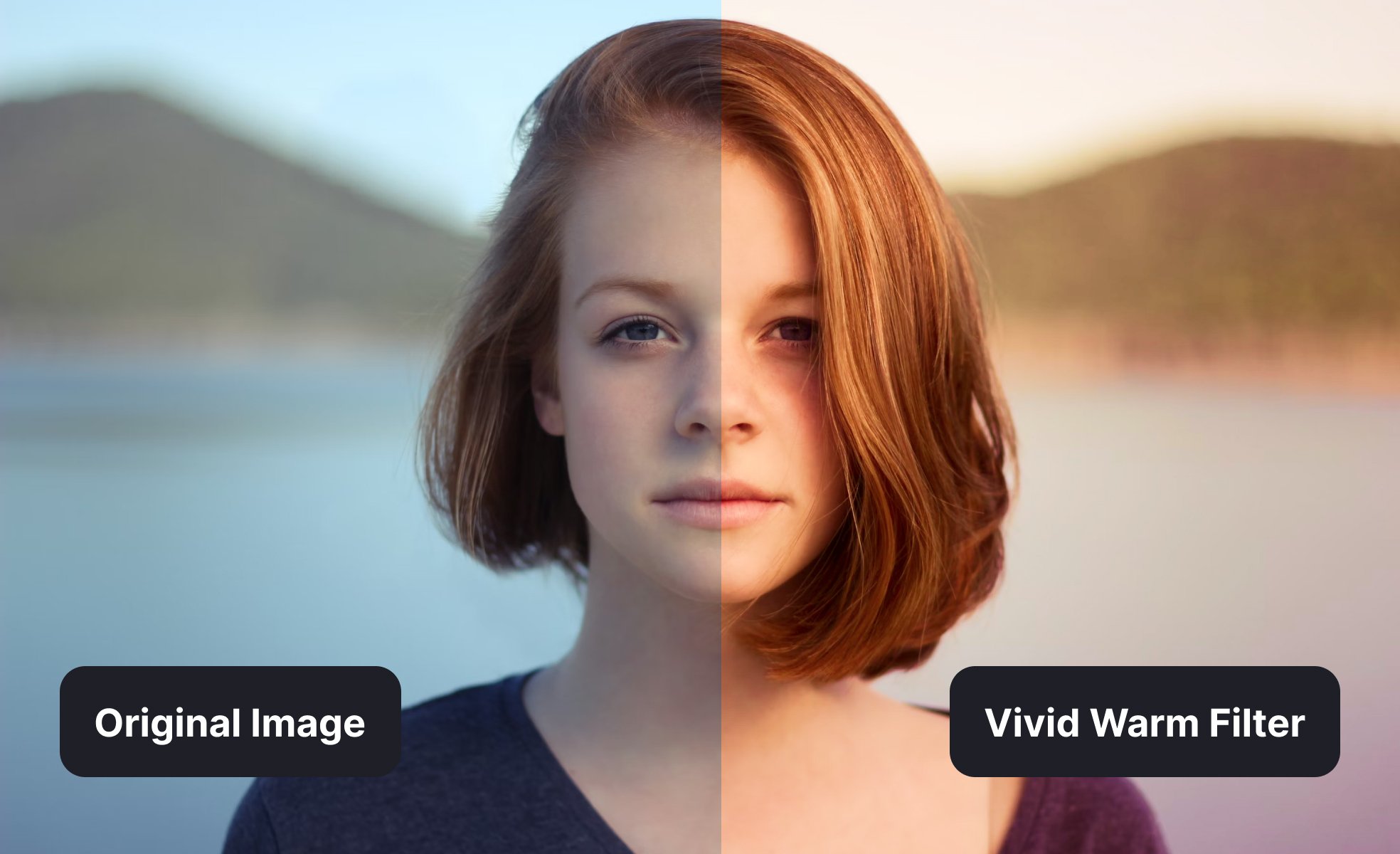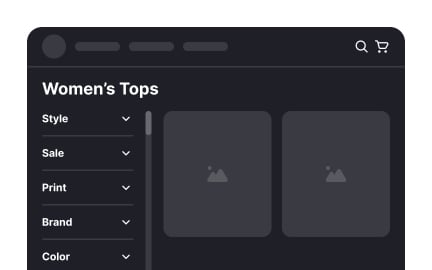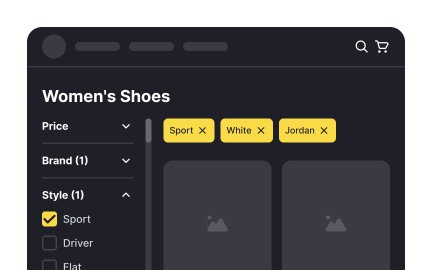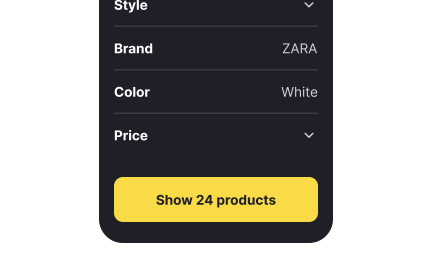Filters
Filters allow users to refine large sets of data or content by criteria, improving navigation, personalization, and usability across digital services.

Filters are user interface elements that help people narrow down vast sets of information into manageable, relevant results. They are critical in contexts where choices are abundant, such as e-commerce, streaming platforms, or databases. By letting users apply categories like price, color, size, or rating, filters simplify decision-making and reduce cognitive load, allowing individuals to focus on what matters most to them.
In UX design, filters play a central role in discoverability. Without them, users are forced to scroll endlessly or search repeatedly, often leading to frustration and abandonment. Well-structured filters guide users through a large collection quickly, turning what could be overwhelming into a smooth and intuitive interaction. Designers think carefully about how filters are grouped, labeled, and displayed to ensure they match user expectations.
Product managers consider filters essential for engagement and conversions. On e-commerce sites, well-optimized filtering systems directly increase sales by helping customers find desired products faster. Streaming platforms use genre, year, or mood filters to keep viewers engaged longer. In both cases, filters translate directly into measurable business outcomes by reducing friction in discovery.
Accessibility intersects strongly with filter design. Filters must be usable by screen readers, navigable via keyboard, and legible across devices. Poorly labeled or overly complex filters can exclude users with cognitive or visual impairments. For example, grouping options illogically or offering redundant categories can confuse both users and assistive technologies. By following accessibility guidelines, teams ensure that filters are inclusive and efficient for everyone.
Real-world examples highlight their effectiveness. Amazon’s product filtering system is among the most advanced, allowing shoppers to refine millions of items by brand, price, delivery options, and more. Spotify uses filters in playlists and search results to help users discover music they otherwise might not find. News platforms allow filtering by date, region, or topic, tailoring content consumption to user preferences.
Learn more about this in the Filtering & Sorting Lesson, a part of the Common Design Patterns Course.
Key Takeaways
- Filters refine large sets of data into relevant subsets.
- UX designers use filters to improve discoverability and reduce frustration.
- Product managers connect filters to engagement and conversion outcomes.
- Accessibility requires logical grouping, clear labels, and inclusive design.
- Real-world platforms like Amazon and Spotify demonstrate filter effectiveness.
- Iteration and personalization ensure filters remain relevant and adaptive.
Filters simplify decision-making in environments where options are overwhelming. Without them, users may abandon searches or spend unnecessary time browsing. By structuring results based on user-selected criteria, filters reduce friction and accelerate progress toward goals.
This improvement in usability directly impacts business outcomes. Platforms that implement strong filters often see higher conversions, deeper engagement, and stronger retention because users feel in control of the discovery process.
When filters are confusing, redundant, or poorly labeled, they add complexity instead of reducing it. For instance, separating similar categories like “blue” and “navy blue” may create unnecessary decision points. Filters hidden behind multiple layers of interaction also frustrate users, especially on mobile devices where space is limited.
The result is often abandonment. Users faced with frustrating filters may leave the platform entirely, perceiving it as inefficient. Careful testing and alignment with user expectations prevent these problems.
Personalized filters adapt to user preferences, highlighting the most relevant options first. For example, a video platform may suggest filters related to genres a viewer already enjoys, or a shopping app may remember size and brand preferences for faster refinement.
This personalization reduces effort and creates a sense of recognition, which increases loyalty. Users feel the system understands them, turning what was once a generic function into a tailored experience that deepens engagement.
Recommended resources
Courses

UX Design Foundations

Design Terminology

UI Components I
Exercises
Projects

Plant Shop catalog

Catalog Page for E-Commerce Service | Old Souls














